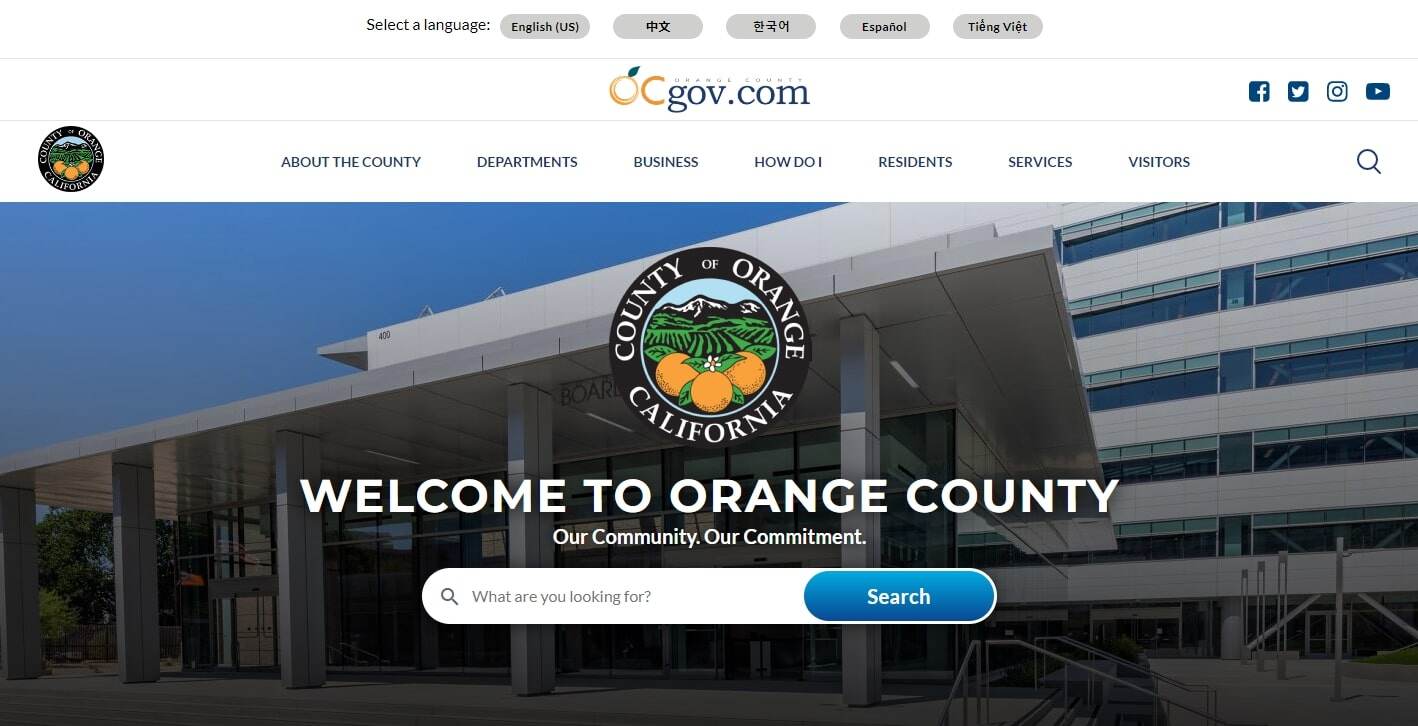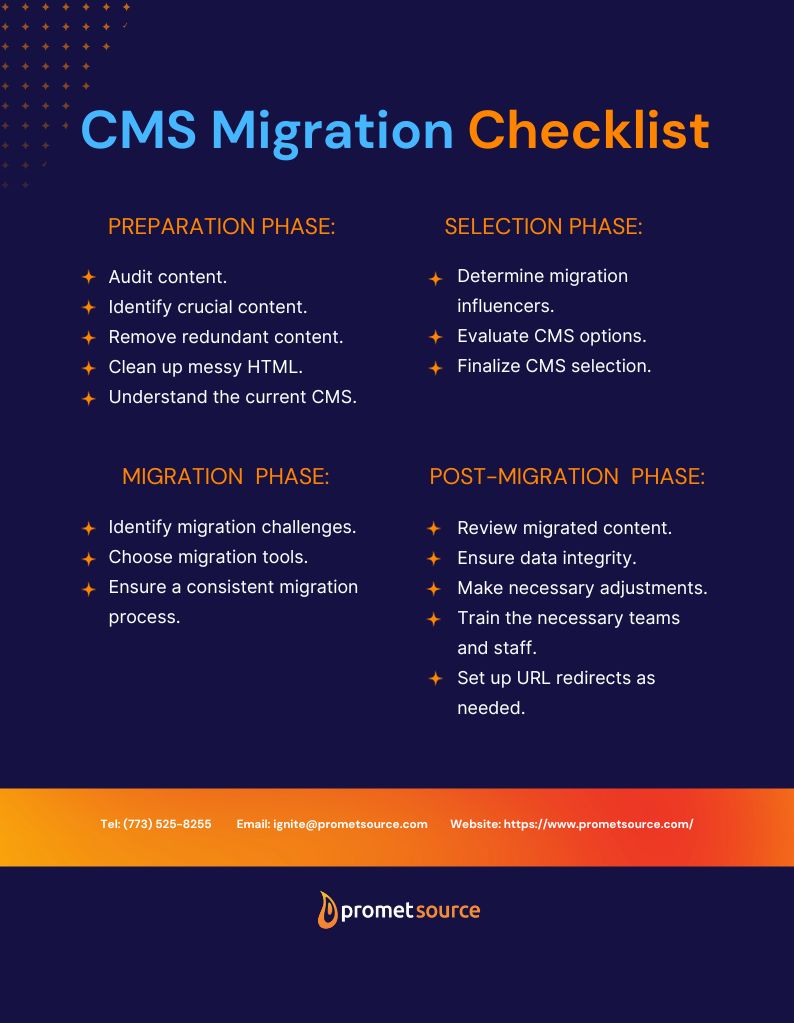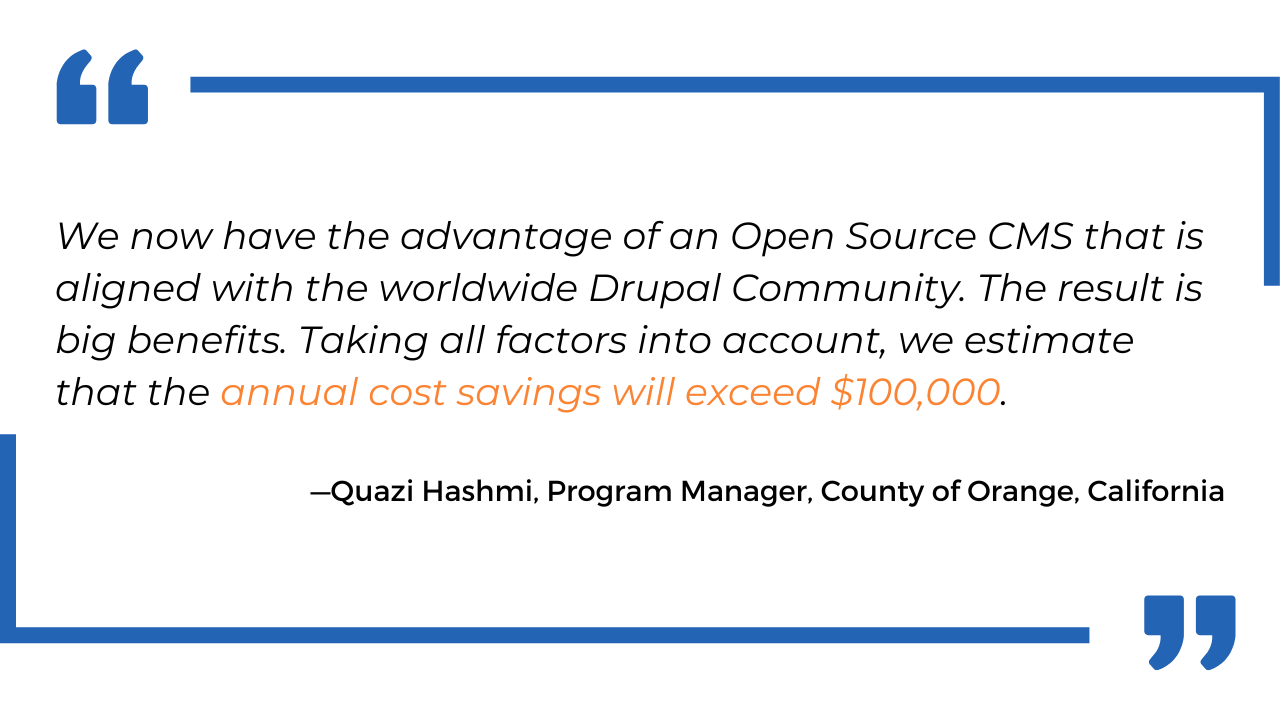CMS Migration for State and Local Government

Looking to move your government website to Drupal? This blog post from Drupal expert John Lutz will walk you through everything you need to know!
Takeaway: CMS migration involves the transition from one Content Management System to another. It's akin to switching tools, ensuring all content, from articles to images, is seamlessly transferred. For State and local governments, a modern CMS ensures effective community service and a robust online presence.
Working with Drupal for 15 years
Starting with Drupal 6 and now well-acquainted with Drupal 10, my adventure with this platform has been both enlightening and transformative.
Each version brought its own set of features, challenges, and improvements. For instance, while working on migration projects like the one for Orange County, I encountered proprietary CMS systems that were either being phased out or had undergone acquisitions.

These experiences underscored the importance of adaptability and the need for a CMS that evolves with the times. Over the years, I've observed Drupal's commitment to user-friendliness, flexibility, and security, making it a preferred choice for many government entities.
Read: [Study] U.S. Government CMS Preferences and Trends →
What is CMS migration and why does it matter?
CMS migration involves the transition from one Content Management System to another. Think of it as relocating from one house to another, ensuring every piece of furniture and personal item is safely transferred and placed correctly in the new home.
For websites, this process can sometimes involve altering the content's structure, especially when migrating from proprietary systems like the one Orange County had.
The primary reasons for such migrations often stem from the CMS no longer being maintained, its limitations, or security concerns. For government websites, ensuring that the platform is up-to-date and secure is not just about functionality; it's a matter of public trust and service continuity.
Why I recommend Drupal for State and local government websites
Having been deeply involved in several migration projects, including those for Riverside County and Orange County, I've seen firsthand the advantages of Drupal.
One of the standout features of Drupal is its security. In our work with Orange County, security was a significant concern, especially given the proprietary nature of their previous CMS. Drupal's proactive approach to security, backed by a vigilant community, ensures that vulnerabilities are quickly addressed.
Furthermore, Drupal's commitment to accessibility is unparalleled. This is crucial for government websites, ensuring that all citizens, regardless of their abilities, can access and interact with the content. The migration process itself, especially with tools like Drupal's Migrate API, ensures a smooth transition, retaining the integrity of the content and ensuring it aligns with accessibility standards.
The CMS migration checklist: Lessons from my projects

Preparation phase
Before diving into the migration process, it's essential to audit and clean up content. This phase involves identifying what's crucial, removing redundant content, and addressing any messy HTML.
As I experienced with Orange County, understanding the current CMS's state, especially if it's proprietary or undergoing changes, is also important as this will tell us if we will be facing any content migration issues.
Selection phase
Choosing the right CMS is paramount. In the cases of Riverside and Orange County, the decision to migrate to Drupal was influenced by various factors, including the CMS provider's acquisition and the limitations of the existing system.
The selection phase should consider the CMS's scalability, flexibility, and security features.
Migration phase
This is where the actual migration happens. With Orange County, we faced unique challenges due to their proprietary CMS, since they did not have access to their own database. Instead of a traditional migration, we employed a scraper tool that viewed the website from the front end, scraping the HTML for migration.
Riverside County presented a different challenge with multiple CMSs in play. We used the scraper tool to treat each system uniformly, ensuring a consistent migration process.
Post-migration phase
After the migration, it's crucial to review the content, ensure data integrity, and make necessary adjustments.
Training on the new system, as we did with Orange County, allows teams to start editing and refining content before going live.
This phase also involves setting up redirects from old URLs to new ones to maintain SEO value.
Is open source secure? Is it accessible?
There's a prevailing myth that open-source platforms are less secure than their proprietary counterparts. However, my experience with Drupal has shown otherwise.
As I mentioned earlier, the proactive approach of the Drupal community ensures that vulnerabilities are quickly addressed, offering a robust security framework.
Security is also the biggest reason why we highly encourage Drupal website owners to update to the latest version. Once a version has reached its end of life, the community will stop support and security fixes for that version.
Read: Open Source vs Proprietary for Government Websites →
Evidence of Drupal's security
Drupal's core is built with a strong emphasis on security. The vigilant community behind it consistently rolls out updates and patches, ensuring any potential threats are mitigated.
This proactive approach was evident in our work with Orange County, where security was a significant concern given the proprietary nature of their previous CMS.
Accessibility features
Another strength of Drupal is its commitment to accessibility. The platform ensures that websites are accessible to people with disabilities, adhering to the World Wide Web Consortium (W3C) guidelines and is currently striving to be WCAG 2.1 compliant. This commitment to inclusivity and compliance is invaluable for government websites, ensuring equal access to information and services for all citizens.
Benefits of a successful CMS migration
There are four huge benefits that I’ve seen in the hundreds of website migrations I’ve performed.
Cost efficiency and no vendor lock-in
Migrating Orange County’s 41 microsites to an open-source CMS like Drupal released them from vendor lock-in and other associated fees, saving them an estimated annual cost of $100,000.

Improved website performance and user experience
Migrating to a modern CMS, especially from outdated or proprietary systems, can significantly enhance website performance.
As I observed with Orange County, transitioning to a platform like Drupal can offer a more user-friendly and flexible experience both for the staff creating content and the citizens using the website.
Enhanced security and reduced risk of threats
One of the primary reasons for CMS migration is security. Especially with government entities like Orange County, ensuring a platform is up-to-date and secure is crucial since government websites can house sensitive data.
Scalability and integration capabilities
A CMS like Drupal can handle increased traffic and content growth, ensuring the website remains responsive and efficient as more content is added to the website. Drupal is considered to be a heavy lifter, making it perfect for enterprise-level websites with hundreds of thousands—if not millions—pages.
Aside from that, Drupal is better equipped to integrate with other digital tools and platforms, making it useful and efficient to both staff and users.
How Provus® makes CMS migrations successful
Provus® is a content editing tool based on Drupal. It's essentially a starter kit for Promet, allowing us to initiate new websites with consistency. This standardization aids our development, design, and maintenance team in understanding how each site functions.
Read: Provus® Frequently Asked Questions →
Provus® incorporates the layout builder from Drupal core, which visually organizes and adds components to a page. This provides users with more control over page layouts and content placement, ensuring a smoother migration process.
Hosting considerations
While we often recommend hosting providers like Acquia and Pantheon due to their specialization in Drupal websites, it's important to understand that they're not the only options.
However, these providers offer robust security and performance features tailored for Drupal, that’s why we recommend them.
Ultimately, the choice of hosting provider should align with the government website’s needs. If they're comfortable with another provider, that's perfectly fine.
Why Promet Source for your CMS migration
Over my years at Promet Source, I've had the privilege of being part of a team that's truly dedicated to efficient website migrations, especially for those transitioning to open-source platforms like Drupal or WordPress.
Our collective expertise isn't just confined to the CMS migration process; it extends to hosting migrations as well, as we've formed strong partnerships with platforms such as Acquia and Pantheon.
- Security and ADA compliance: At Promet, we've always placed a paramount emphasis on security and compliance. Our team ensures that the websites we work on are safeguarded. Our focus on accessibility has also been unwavering, ensuring that we meet standards like ADA Sec 508 and adhere to regulations like GDPR.
- Seamless and secure migrations: Our team specializes in guiding organizations through a seamless and secure web migration process. We approach each project strategically, understanding what the organization needs and ensuring a streamlined migration without causing disruptions.
- Open-source solutions: We at Promet are strong advocates of open-source solutions (again, I’ve worked with Drupal for 15 years). We genuinely believe that open-source platforms lead to more secure, flexible, and stable websites, translating to cost savings for our clients. Plus, the vast community behind these platforms ensures continuous enhancements and keeps clients from being tied to a specific vendor.
- Migration timeline: The duration of a migration project can vary, but we are always transparent and will work with you every step of the way. For instance, while I was involved in the Orange County migration project that spanned around 18 months, another project for UC Riverside's 525 websites was completed in just three weeks.
- Hosting considerations: While we often recommend hosting providers like Acquia and Pantheon due to their Drupal specialization, we're also open to flexibility. If a client has a preferred hosting provider, we're more than willing to accommodate.
- Provus® as a game changer: I've seen Provus® in action, and it's truly transformative. With Provus®, users gain more control over their page layouts and content placement, making the editing experience smoother.
SHARE WHY PROMET SOURCE TO YOUR STAKEHOLDER
Let’s work on your CMS migration today
Staying updated is crucial. Working with numerous Drupal versions and performing hundreds of migrations has shown me just how important it is to move to a well-supported open-source CMS.
For government entities in particular, ensuring that their online platforms are secure, accessible, and user-friendly is paramount. The importance of a reliable CMS cannot be overstated.
If you're considering a CMS migration or have any questions about the process, feel free to reach out through our contact form. With years of experience and numerous successful projects, we will work with you and guide you every step of the way.
Other Insights & Resources you may like
Get our newsletter
Alright, so, software ate the world. That happened. Technology is now at the heart of every modern company, and as far as we can tell that isn’t changing. That’s the sitch. Our job is to make it more human.





